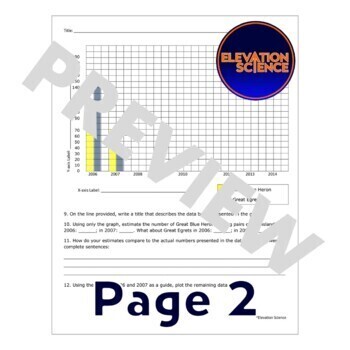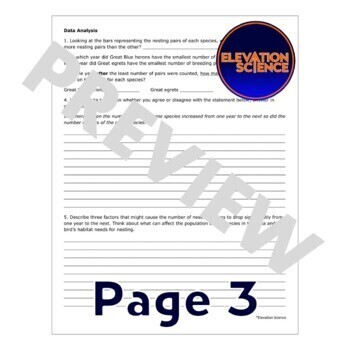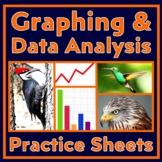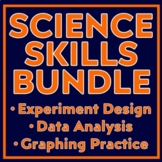Data Analysis and Graphing Worksheet Scientific Method Practice (Herons)
- PDF
- Easel Activity
Also included in
- Save 33% OFF list prices! Build GRAPHING and DATA ANLAYSIS skills with these scaffolded worksheets. Each worksheet builds upon the last to grow student independence with graphing and data analysis. Students will graph and analyze scientifically meaningful data based on real-world research on wildPrice $9.99Original Price $15.00Save $5.01
- SAVE 25% OFF LIST PRICES! Build foundational SCIENCE SKILLS such as experiment design, graphing, and data analysis! This bundle includes 8 worksheets that give your students structured support to practice these skills. Use in a scientific method unit, throughout the school year to reinforce skillPrice $17.99Original Price $24.00Save $6.01
Description
Students build GRAPHING and DATA ANALYSIS skills. This activity provides a data table and an incomplete bar graph related to nesting habits of herons. Students follow directions that lead them through foundational graphing and data analysis skills.
Instruction is built into the worksheet.
This activity builds the following skills:
- Setting up bar graphs, including choosing intervals, labeling axes, and writing graph titles.
- Using data to make a bar graph (with an example already in place).
- Pulling data from the graph.
- Data analysis that requires using data as evidence to support conclusions.
A Note On Scaffolding:
While this worksheet is a stand-alone lesson as-is, we use it in a series. Our Graphing & Data Analysis Bundle includes this worksheet plus 4 others. Each worksheet requires slightly more independent graphing skills than the last, providing a framework to build graphing skills. Read more about this set of activities HERE.
Teacher Notes:
- Please note that this resource is not editable.
- Answer key included.
- Want more skill building activities? Consider our Graphing & Data Analysis BUNDLE.
- Build experimental design, data analysis, and graphing skills with our SCIENCE SKILLS BUNDLE!
Please consider clicking HERE to follow Elevation Science on TPT!








